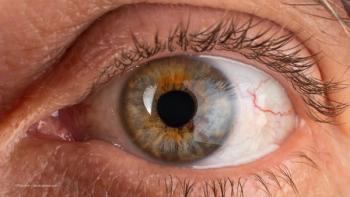
ALSTAR study identifies potential functional biomarker for early, intermediate AMD
The study further defined the relationship between delayed rod-mediated dark adaptation and the status of outer retinal bands on optical coherence tomography.
A research team led by first author Sohaib Fasih-Ahmad, MD, correlated delayed rod-mediated dark adaptation (RMDA), the first functional biomarker for incident early
The relationship between RMDA and the status of the outer retinal bands on OCT has not been well defined, according to Fasih-Ahmad. The researchers used automated OCT segmentation with manual correction to explore the potential of the ellipsoid zone (EZ) and interdigitation zone (IZ) on OCT as an imaging biomarker for early AMD by measuring their association with delayed RMDA.
Data from 476 patients were assessed, of which 138 had eyes with early AMD, 101 had eyes with intermediate AMD, and 237 had eyes that were aging normally. The patients underwent volume OCT imaging of the macula and the rod intercept time (RIT) was measured. The EZ and IZ on all OCT B-scans of the volumes were segmented. The investigators computed the areas of detectable EZ and IZ and the mean IZ thickness within the Early Treatment Diabetic Retinopathy Study grid, and the associations with the RIT were assessed.
Assessment results
The investigators reported that delayed RMDA, that is, a longer RIT, was most strongly associated with IZ areas that were less preserved (r = −0.591; P < 0.001). Other parameters that were associated with delayed RMDA were decreased IZ thickness (r = −0.434; P < 0.001) and the EZ area (r = −0.334; P < 0.001). In normal eyes, there was no correlation between the RIT and IZ integrity within 1.5 mm of the fovea.
In commenting on their findings, the authors said, “Because RMDA is correlated with the area and thickness of the outer retinal bands in normal, early, and intermediate AMD eyes and RMDA is a continuous AMD biomarker, the area and thickness values of these bands can be used as AMD biomarkers as verified by RMDA. The IZ area on OCT fulfills the conditions of a valuable imaging biomarker for early AMD by establishing a structure-function association with delayed RMDA. This relationship is biologically plausible, because retinoid availability and transfer at this interface is rate-limiting for RMDA. The structure-function association of EZ area and RMDA was weaker and likely useful only in later stages of AMD.”
They advised that further studies demonstrating the reproducibility of this association with different methodologies and instruments are needed to demonstrate the value of the IZ integrity as an imaging biomarker. They also called for other studies to assess other aspects of retinoid availability to the photoreceptors and their relationship to the IZ area. The relationship between RMDA and known AMD features (subretinal drusen deposits, drusen, etc.) that affect the outer retinal layers may offer further support for IZ on OCT as an imaging biomarker for early AMD should also be further examined, according to the authors.
Reference
Fasih-Ahmad S, Wang Z, Mishra Z, et al. Potential structural biomarkers in 3D images validated by the first functional biomarker for early age-related macular degeneration – ALSTAR2 Baseline. Invest Ophthalmol Vis Sci. 2024;65; doi:10.1167/iovs.65.2.1
Newsletter
Want more insights like this? Subscribe to Optometry Times and get clinical pearls and practice tips delivered straight to your inbox.






















































.png)


